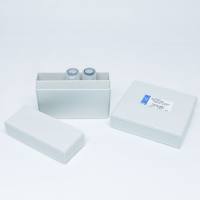DNA-Based Techniques for Detection of Carriers of Duchenne and Becker Muscular Dystrophy
互联网
互联网
相关产品推荐

1 kb DNA分子量标准
¥100

DMD抗体DMD一抗抗体Muscular dystrophy Duchenne and Becker types antibody抗体DMD Antibody抗体
¥1100

SIRPA/SIRPA蛋白Recombinant Human Tyrosine-protein phosphatase non-receptor type substrate 1 (SIRPA)重组蛋白Brain Ig-like molecule with tyrosine-based activation motifs蛋白
¥1344

Recombinant-Mouse-Myotonin-protein-kinaseDmpkMyotonin-protein kinase; MT-PK EC= 2.7.11.1 Alternative name(s): DM-kinase; DMK DMPK Myotonic dystrophy protein kinase; MDPK
¥14392

γ-氨基丁酸试剂盒,用于样本中GABA含量检测,微量法,GABA Content Detection Kit
¥358
相关问答

